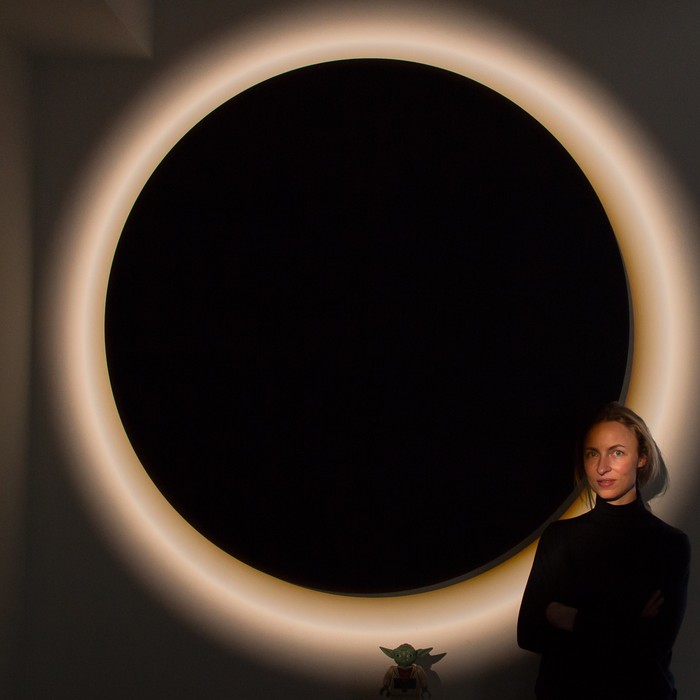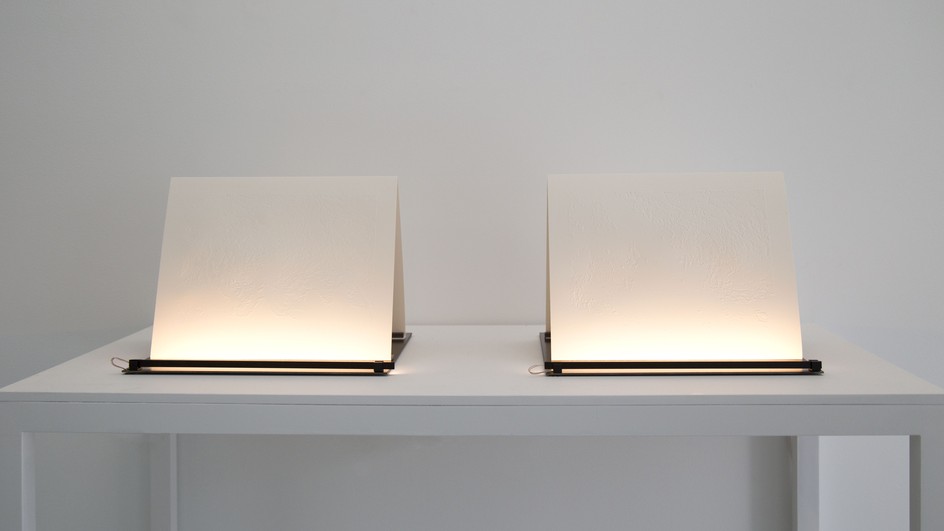
Visiting artist professor
2018 - 2019
Félicie d’Estienne d’Orves
Born in 1976 in Athène (Greece)
An artist whose chief material is light, Félicie d'Estienne d'Orves is interested in the optical and acoustic sciences, as well as in astrophysics and the sciences of perception and cognition. Her works draw on phenomenological knowledge of the real, questioning the process of vision and the conditioning of our gaze. Born in Athens in 1979, she lives and works in Paris. Her work has been shown in different places like: the Centre Pompidou / Nuit blanche / Sorbonne Art Gallery / Le CENTQUATRE-PARIS, Biennale Némo (Paris) / ICAS (Dresden) / New Art Space / Sonic Acts (Amsterdam) / Watermans Arts Centre (London) / Elektra (Montreal)/ Day for Night (Houston) / OCAT (Shanghai) / Aram Art Museum (Goyang/ South Korea) ...
Decentring, relativity and continuous movement are at the heart of the project pursued by Félicie d'Estienne d'Orves, who expresses herself through installations and performances in which she conveys the scale of distant space-times that are the domain of astrophysics. In her work, light is both tool and subject. She is interested in defining the limits of physical and cosmological space by speed and light, as in her series "Étalon lumière" (Light Standard, 2016), which introduces the idea of cosmic time as a standard measurement. A "light time" that is programmed over several thousand years in accordance with NASA calendars, whose variable amplitudes underscore the impermanence of celestial mechanics. "We live in the illusion of a static space-time."
In her land art, she uses the dense, rectilinear light of lasers to make manifest the relations of simultaneity, in a given moment and place, between the continuous movement of the Earth and that of the cosmos. As for EXO (2015), an audiovisual performance that reads the sky in real time like a musical score, or again in the Atacama (Chile) and Utah (US) deserts by alignments of lasers on celestial objects in the deep sky.
She works regularly with astrophysicists and planetary scientists, especially Fabio Acero at the AIM laboratory (CEA/Saclay), who specialises in supernova and high energies.
The year to come will be devoted to a research project concerning the Martian sunset. This may lead to the production of a specific installation at Le Fresnoy.
Since the 1970s, Martian "rovers" have picked up images of a bluish setting sun. The artist is currently working with specialists studying the atmosphere on Mars in Pasadena (Caltech/Jet Propulsion Laboratory) and Paris (Mars Climate Database/Jussieu). Her project is an audiovisual work written in homage to the Trilogie de la mort by composer Eliane Radigue, which will take the form of a performance at the Centre Georges Pompidou in 2019.
Deep fields art. "To answer the invitation from Le Fresnoy, I would like to propose a reflection around the fields of 'deep' perception, which I described as 'deep fields' and which, following on from the land art of the 1970s, offer new fields of artistic exploration. The term is taken from the image titled 'Deep Field' produced by the Hubble telescope in 2016. In this seemingly empty region of the sky, a window of a few centimetres revealed nearly three thousand distant galaxies, taking in a cosmic perspective of over thirteen billion light years. The HDF, or 'Hubble Deep Field', is a photograph, visual proof of an infinity of worlds* in which each galaxy contains billions of suns. The image speaks of other dimensions of the real and literally projects thought towards new horizons. How are these landscapes described by scientific images and models constructing our perceptions, which are not multiple, parallel, ubiquitous?
Just as the HDF raises the question of our cosmological horizon, so the inverted-colour photographs of the Martian sunset alter our perception of an unchanging horizon. There is no life on Mars, but study of its environment and atmosphere is the starting point for the search for signs of life in extra-solar systems. The aim is to construct models of representation to complete our observation of more distant scales. This interface art transposes to the scale of the body the 'deep reality' or 'sciencefiction materialism' described by J. P. Pharabod and S. Ortoli in 1984 in relation to quantum physics."
Félicie d'Estienne d'Orves
"We maintain that there exists an infinity of earths, an infinity of suns and an infinite ether." Giordano Bruno, Infinity, the Universe and the Worlds, 1584.
** Canticle of quantums: does the world exist ? J.P. Pharabod and S. Ortoli, 1984.

